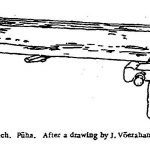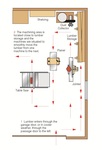We may receive a commission when you use our affiliate links. However, this does not impact our recommendations.
Shown above is “Sunset,” an intricate segmented bowl by Hal Metlitzky.
When I learned woodturning in the mid-1990s, my goal was simply to make bowls and platters with fair curves, pleasing shapes and thin, uniform walls. If the wood figure popped, all the better. This was woodturning as a craft. And I figured that was a fine goal.
Then, I saw the work of Mick O’Donnell, who was experimenting with multi-colored dyes that disguised the wood, and David Ellsworth and John Jordan, who were carving and torching their turnings to create shapes and textures that were far removed from what came off the lathe. I realized there was a whole other level of woodturning out there. That inspired me to try to expand my skills even further.
Over the weekend I attended the American Association of Woodturners 2013 Symposium in Tampa, Fla., and found even more inspiration. As the photos here show, for many of these turners, woodturning is just a starting point on the way to making works that are really forms of art.
Is it still woodturning if you can’t even tell whether wood is involved? It is for me. I can appreciate the skill these turners employed to create the exquisite initial shapes. But then I’m a turner myself.
Here are some supplies and tools we find essential in our everyday work around the shop. We may receive a commission from sales referred by our links; however, we have carefully selected these products for their usefulness and quality.










![Turning Shaker Knobs [Video]](https://www.popularwoodworking.com/app/uploads/bfi_thumb/dummy-transparent-r5kh3acpc3se29vi5c4papnw5p1suk429qwgwohvh4.png)




what do I think? WOW! great turners and incredible works of art… and if you can hardly tell it is still a turned piece of wood, so what? The process is only critical to those of us who may try to learn how to do similar work.